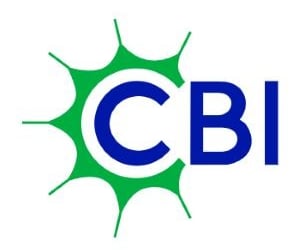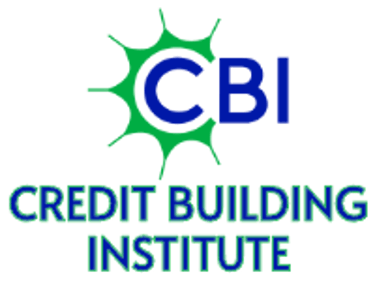Credit Scores, Stronger Cities: How Building Credit Can Break the Poverty Cycle
CREDIT BUILDINGWEALTH-BUILDINGPERSONAL CREDITCOMMUNITY BUILDING
M. Sennette, CBI Contributor
11/4/20254 min read


A New Path Out of Poverty
Stronger cities with higher credit scores isn’t a theoretical vision—it’s unfolding in communities across America that have embraced credit building as a cornerstone of economic mobility. From Detroit to Dallas, city leaders are discovering that improving residents’ credit health doesn’t just uplift individuals; it can transform entire local economies and ease the burden on public assistance programs.
The Data Is Clear: Good Credit Builds Wealth, Poor Credit Sustains Poverty
According to the Federal Reserve, nearly 45 million adults in the United States are either credit invisible or have insufficient credit histories. This lack of credit access disproportionately impacts low-income communities and communities of color, where residents often pay higher interest rates, rely on costly payday loans, or are denied mainstream financial products altogether.
But the impact of a good credit score is incredible. A borrower with a 750 credit score might pay half the interest rate of someone with a 600 score, saving tens of thousands of dollars over a lifetime. These savings can help fund education, start a business, or serve as a down payment on a home; each is an essential step toward breaking the cycle of poverty.
In Richmond, Virginia, a local initiative called Building Credit, Building Futures partnered with community nonprofits to provide credit education and access to secured credit cards. Within 18 months, the average participant’s credit score increased by 62 points. As a result, participants reported fewer instances of using payday loans, higher savings, and a reduced reliance on local aid programs.
“When our residents improve their credit, they’re not just boosting a number—they’re reclaiming economic power,” said Mayor Lisa Thompson of Richmond. “Every point gained is another step away from dependency.”
From Borrowing Power to Wealth Power
Credit is more than access to loans—it’s access to leverage. A solid credit profile unlocks opportunities most take for granted: car loans at fair rates, mortgages that build equity, and business credit lines that fund entrepreneurship. Each transaction, when responsibly managed, becomes a wealth-building tool.
Consider homeownership, a proven pathway to stability. According to the Urban Institute, households with higher credit scores are significantly more likely to qualify for affordable mortgages. As homeownership rises, so does neighborhood stability, property values, and local tax revenue, reducing strain on city budgets.
Similarly, small business growth often hinges on personal credit. Many first-time entrepreneurs, especially in underserved areas, use personal credit to qualify for microloans. A 2022 Small Business Administration study found
that a 10-point increase in community-average credit scores correlates with a measurable uptick in small business starts and local job creation.
Credit Scores, Stronger Cities: How Building Credit Can Break the Poverty Cycle
For decades, poverty reduction has been seen as the sole responsibility of government programs—temporary fixes that too often become permanent lifelines. Yet a growing body of evidence suggests a complementary path—one rooted not in handouts but in empowerment. Imagine a city where residents have the credit strength to buy homes, start businesses, and access fair loans. In such a place, poverty shrinks not because government funds flow in, but because financial opportunity flows outward.
Less Dependency, More Dignity
Communities with widespread credit strength tend to report lower dependency on government-funded aid, ranging from rental subsidies to emergency cash programs. As residents gain access to affordable credit, they can finance their education, handle emergencies, and build safety nets without relying on public assistance.
“Financial self-sufficiency isn’t just good for individuals—it’s good fiscal policy,” noted Dr. Samuel Rivera, an economist with the Community Prosperity Institute. “Every family that transitions from aid recipient to taxpayer lightens the load on state and federal budgets.”
For policymakers, this is not merely a moral argument; it’s a budgetary strategy. Credit-building programs often cost pennies on the dollar compared to traditional poverty alleviation efforts. The return on investment is realized through reduced welfare expenditures, increased local spending, and a stronger tax base.
Rising Tides Lift Local Economies
When credit health improves citywide, the ripple effects are profound. Businesses thrive as more residents qualify for financing. Local banks see increased deposits and loan activity. Cities benefit from more robust property tax collections, while landlords experience fewer evictions and delinquencies.
In Cleveland, Ohio, a community credit initiative led by local nonprofits and credit unions helped more than 3,000 residents raise their credit scores above 680. Within three years, the city recorded a 12% increase in small business
registrations, and delinquent property tax rates fell for the first time in a decade.
“We didn’t just improve credit—we strengthened the fabric of our local economy,” said Angela Wright, Executive Director of the Cleveland Financial Empowerment Coalition.
GLOSSARY QUICKLINKS
Term 1
Term 2
Term 3
Term 4
Term 5
Addressing the Critics: Access, Inequality, and Inclusion
Skeptics argue that systemic inequities—like redlining, discriminatory lending, and income instability—limit the impact of credit-building programs. These challenges are real. But credit-building is not a silver bullet; it’s a lever—one that must be paired with fair lending enforcement, financial literacy education, and affordable banking access.
Community Development Financial Institutions (CDFIs), credit unions, and fintech platforms are increasingly bridging this gap, offering low-barrier products designed for credit-challenged consumers. Cities can strengthen these efforts by integrating credit education into workforce development, housing programs, and high school curricula, ensuring every resident understands how to build and sustain credit health.
A Call to Action: Investing in Credit Literacy
The evidence is undeniable: credit building is a key component of economic development. Cities that invest in credit literacy and responsible credit access aren’t just helping residents borrow; they’re helping them build futures.
To accelerate progress, policymakers should embed credit-building initiatives into local poverty reduction plans. Community organizations should partner with trusted financial educators to provide effective financial education. Financial institutions must expand their offerings of fair and
affordable credit products to underserved borrowers. And citizens—from students to seniors—should see credit not as a burden but as a bridge to opportunity.
The path to prosperity isn’t paved with government checks; it's built through financial empowerment, one credit score at a time.
Credit Building Institute
Together, we can build
creditable relationships and results


Copyright © 2023 Credit Building Institute - All Rights Reserved.
Trusted credit building with 24/7 encrypted data. Build your credit with affordable credit builder plans and reporting to all 3 credit bureaus, helping improve your credit score quickly and safely. 100% money-back guarantee (T&Cs)
